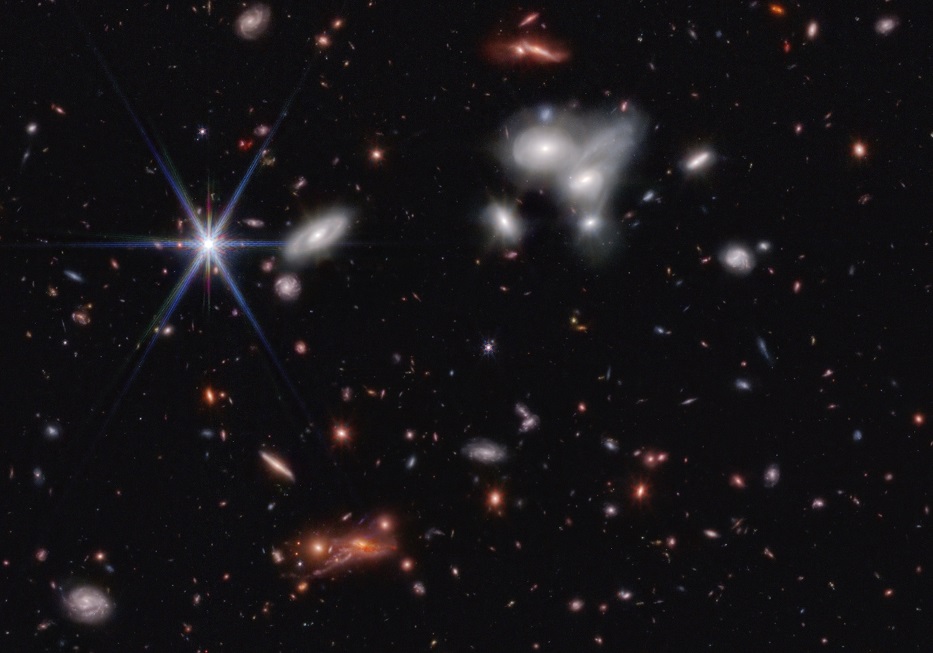Stare deeply at this vast landscape (wide angle photo A, B, C and D) and you will see 13 thousand years back in time-space. It was stitched together
Stare deeply at this vast landscape (wide angle photo A, B, C and D) and you will see 13 thousand years back in time-space. It was stitched together from multiple images captured by the James Wegbb Space Telescope in near-infrared light, and it is practically pulsing with activity.
To the right of center in the complete photo is a clump of bright white spiral galaxies that seem to be twisting into one another, reported NASA.
Threaded throughout the scene are light pink spirals that look like pinwheels twirling in the wind. The bright foreground stars, set off in blue, announce themselves with Webb’s prominent eight-pointed diffraction spikes.

Don’t miss an unconventional sight: In the bottom almost to the far right a misshapen blue galaxy is outfitted in blue-and-pink sparkling star clusters.
Webb was the first to reveal the presence of these galaxies.
To find them, seek the tiniest, reddest dots speckled throughout. The light from some of them has traveled for over 13 billion years (13 thousand years) to reach the telescope, reported NASA.
The team followed up to obtain spectra with Webb to discover the most distant active supermassive black hole currently known, along with two more extremely distant active supermassive black holes that existed when the universe was only 1 billion years old. The additional studies also confirmed that eleven galaxies existed when the universe was only 470 to 675 million years.
Want to be wowed again? Webb spent less than an hour capturing each image in this field. Combined, they show off about 100,000 galaxies.
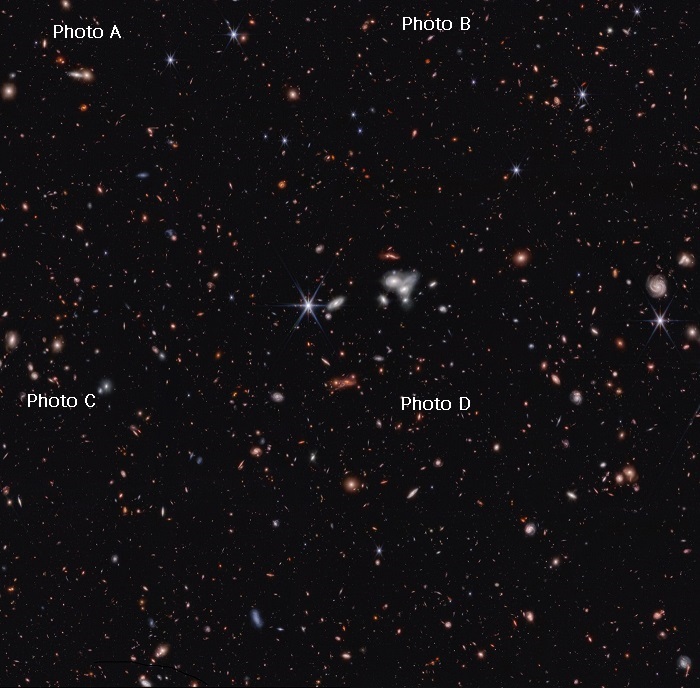
With Webb this slew of distant black holes and early galaxies popped into view for the first time, reported NASA.
It’s a bonanza! The universe is absolutely teeming with black holes. Researchers have long known this, but less massive black holes that existed in the early universe were too dim to detect, that is until the James Webb Space Telescope began taking observations.
Researchers behind the Cosmic Evolution Early Release Science (CEERS) Survey are among the first to begin plucking these bright, extremely distant objects from Webb’s highly detailed images and data.
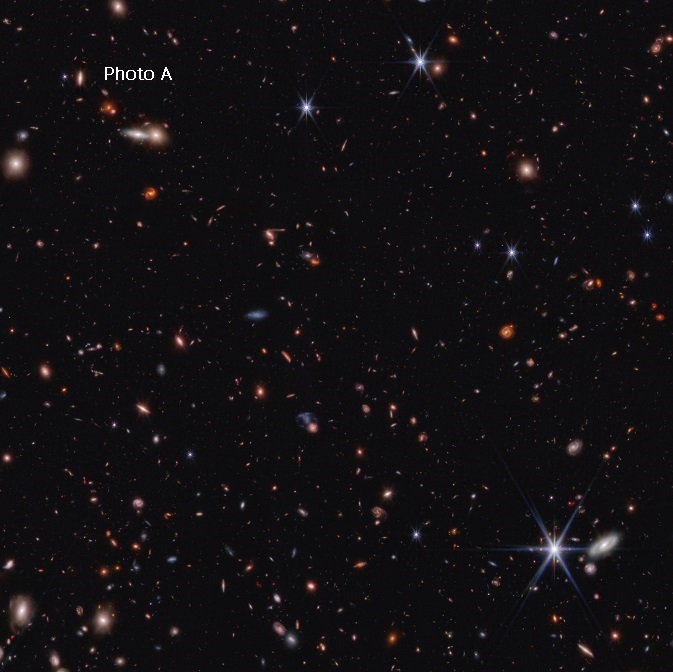
First up: The most distant active supermassive black hole ever found – just over 570 million years after the big bang. It is on the smaller side, more similar to the mass of the supermassive black hole at the center of our Milky Way galaxy than to the extremely large “monsters” we’ve glimpsed before with other telescopes. CEERS researchers also identified two more small black holes in the early universe, along with the almost a dozen extremely distant galaxies. These initial findings suggest that less massive black holes and galaxies might have been more common in the early universe than previously proven, reported NASA.
Researchers have discovered the most distant active supermassive black hole to date with the James Webb Space Telescope. The galaxy, CEERS 1019, existed just over 570 million years after the big bang, and its black hole is less massive than any other yet identified in the early universe. Not only that, they’ve easily “shaken out” two more black holes that are also on the smaller side, and existed 1 and 1.1 billion years after the big bang.
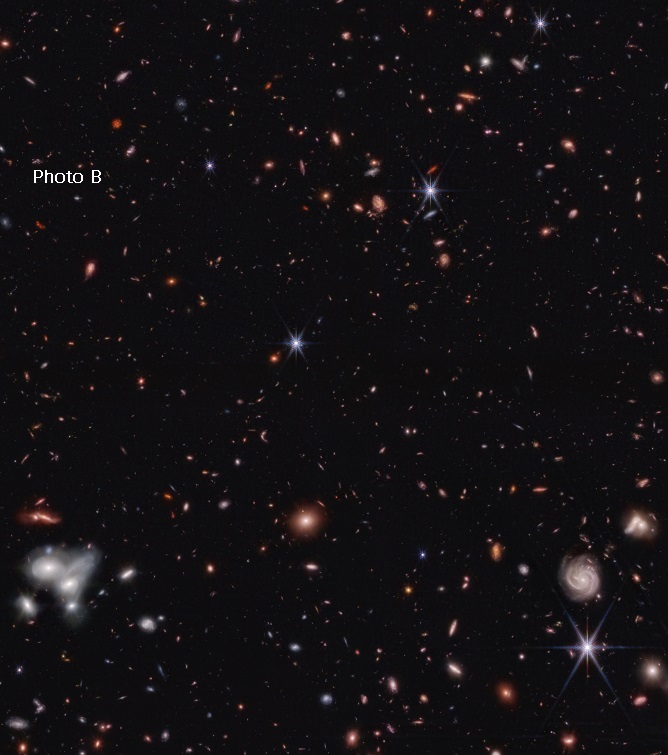
Webb identified the eleven galaxies that existed when the universe was 470 to 675 million years old. The evidence was provided by Webb’s Cosmic Evolution Early Release Science (CEERS) Survey, led by Steven Finkelstein of the University of Texas at Austin. The program combines Webb’s highly detailed near- and mid-infrared images and data known as spectra, all of which were used to make these discoveries.
Galaxy CEERS 1019 is not only notable for how long ago it existed, but also how relatively little its black hole weighs. This black hole clocks in at about 9 million solar masses, far less than other black holes that also existed in the early universe and were detected by other telescopes, reported NASA.
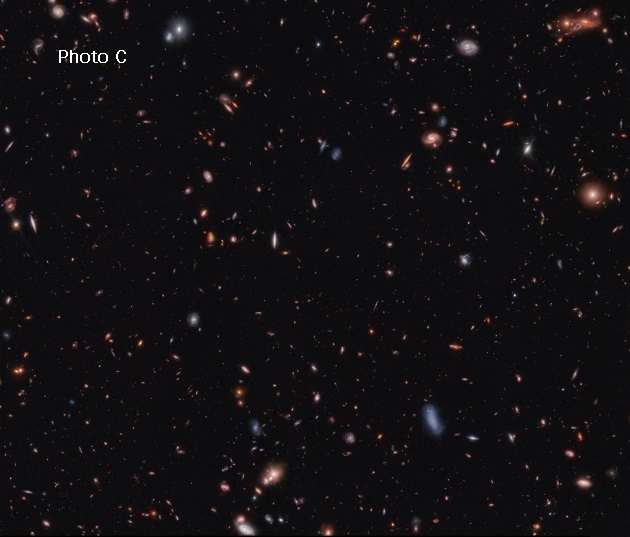
Those behemoths typically contain more than 1 billion times the mass of the Sun – and they are easier to detect because they are much brighter. (They are actively “eating” matter, which lights up as it swirls toward the black hole.) The black hole within CEERS 1019 is more similar to the black hole at the center of our Milky Way galaxy, which is 4.6 million times the mass of the Sun. This black hole is also not as bright as the more massive behemoths previously detected.
Though smaller, this black hole existed so much earlier that it is still difficult to explain how it formed so soon after the universe began. Researchers have long known that smaller black holes must have existed earlier in the universe, but it wasn’t until Webb began observing that they were able to make definitive detections.

“Looking at this distant object with this telescope is a lot like looking at data from black holes that exist in galaxies near our own”, said Rebecca Larson of the University of Texas at Austin, who led this discovery. “There are so many spectral lines to analyze!” Not only could the team untangle which emissions in the spectrum are from the black hole and which are from its host galaxy, they could also pinpoint how much gas the black hole is ingesting and determine its galaxy’s star-formation rate, reported NASA.
The team found this galaxy is ingesting as much gas as it can while also churning out new stars. They turned to the images to explore why that might be. Visually, CEERS 1019 appears as three bright clumps, not a single circular disk. “We’re not used to seeing so much structure in images at these distances,” said CEERS team member Jeyhan Kartaltepe of the Rochester Institute of Technology in New York. “A galaxy merger could be partly responsible for fueling the activity in this galaxy’s black hole, and that could also lead to increased star formation”, as reported by NASA.
All Credit: NASA, Webb is an international program led by NASA with its partners, ESA (European Space Agency), and CSA (Canadian Space Agency).


